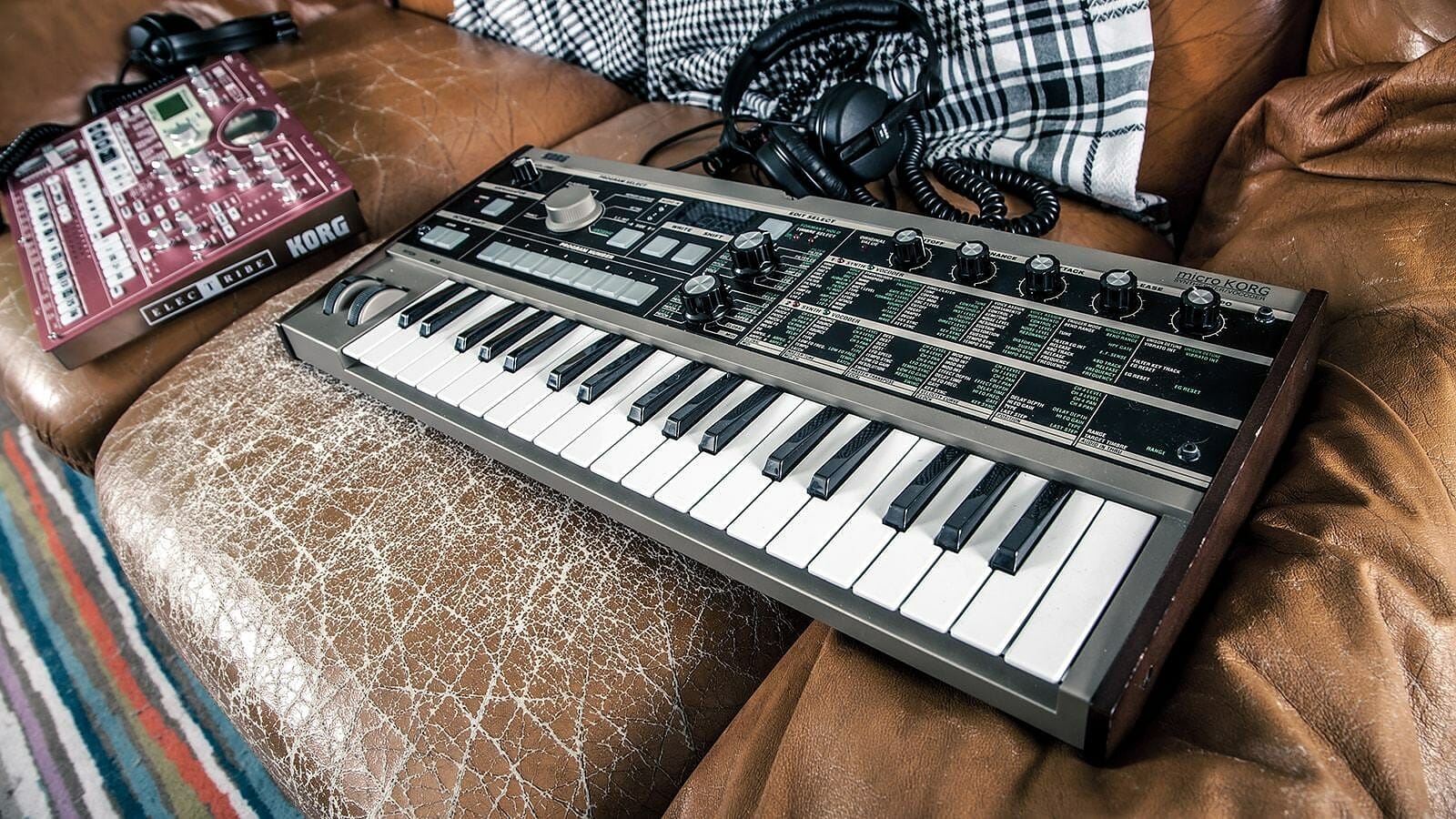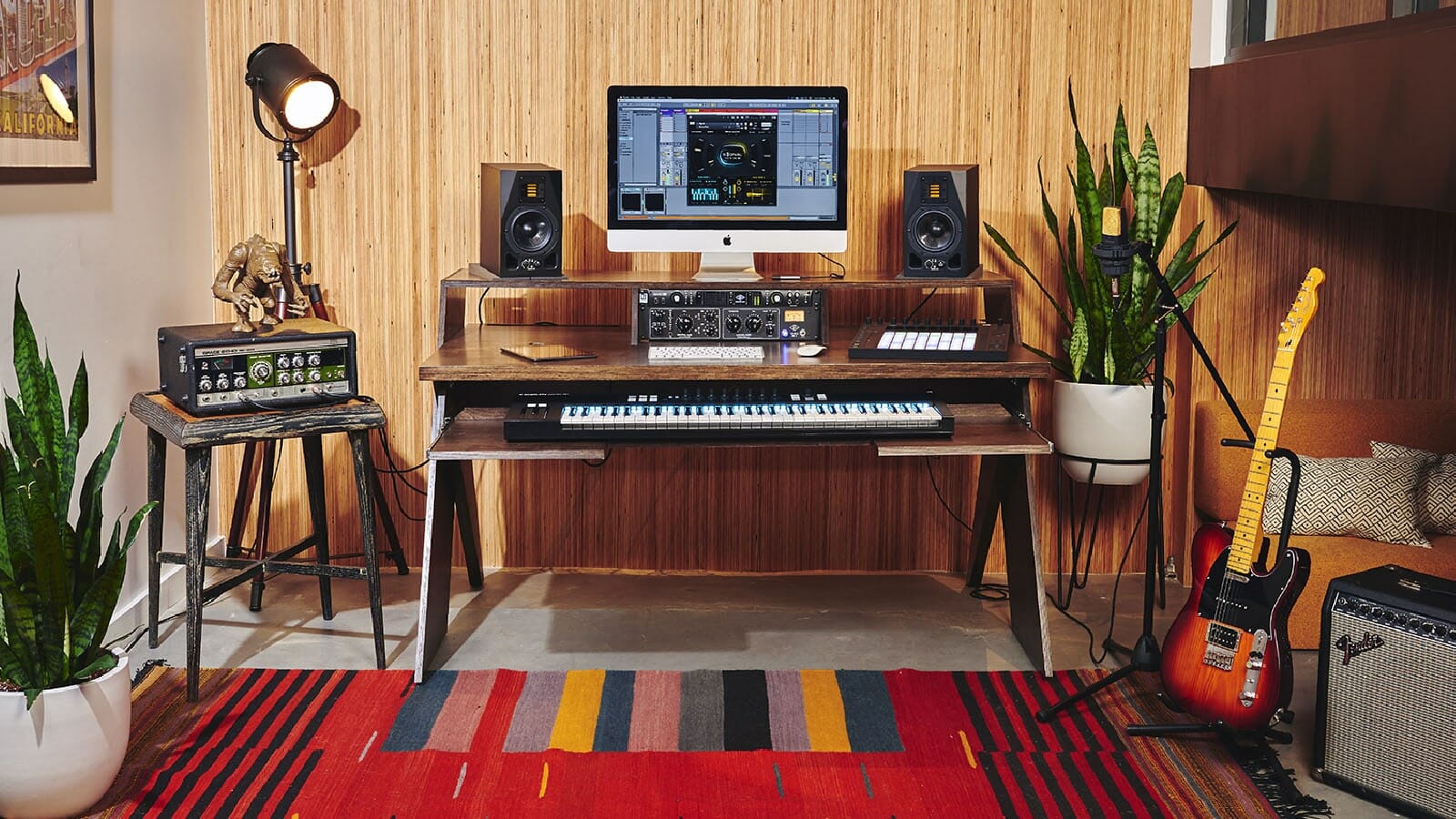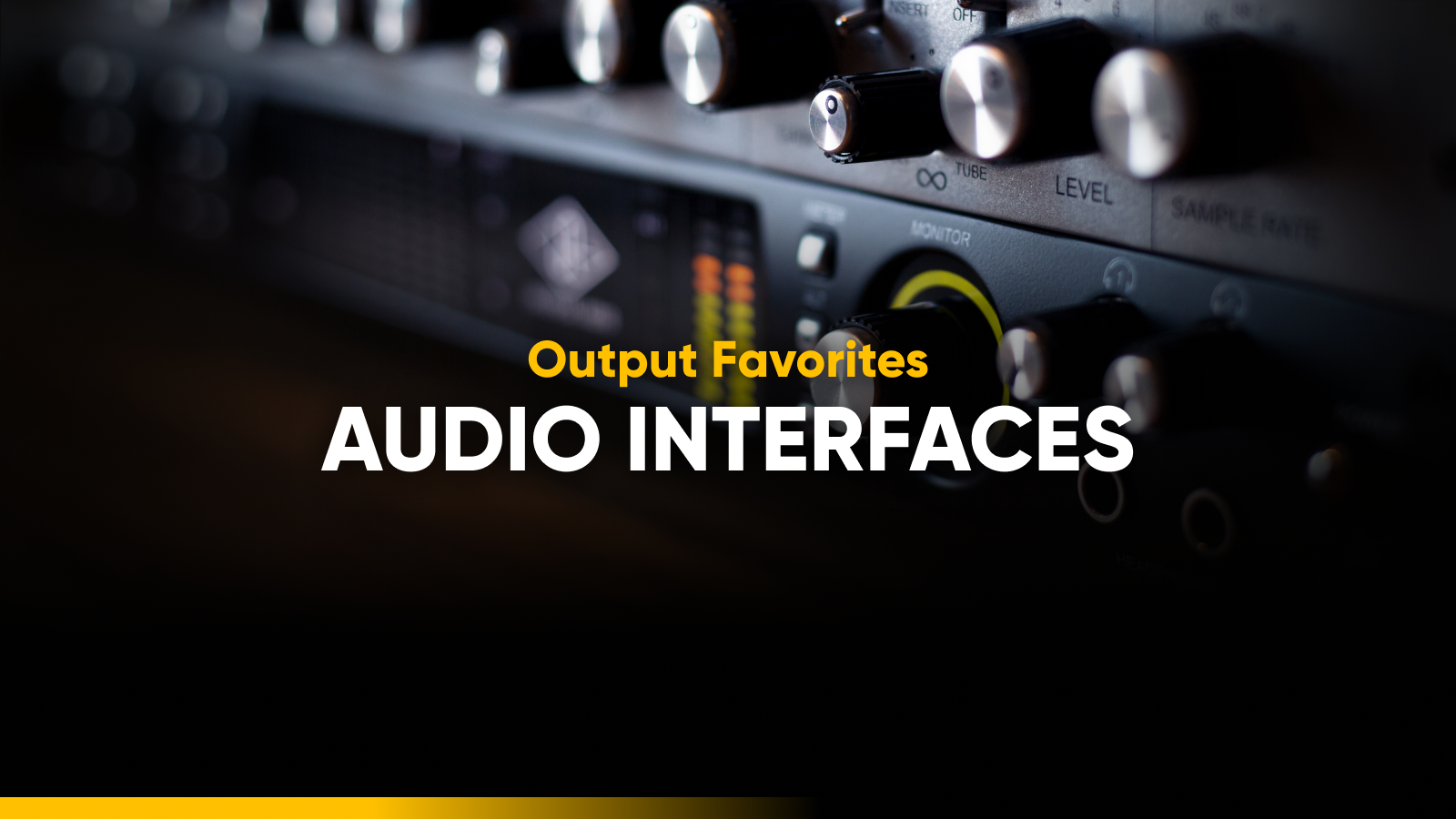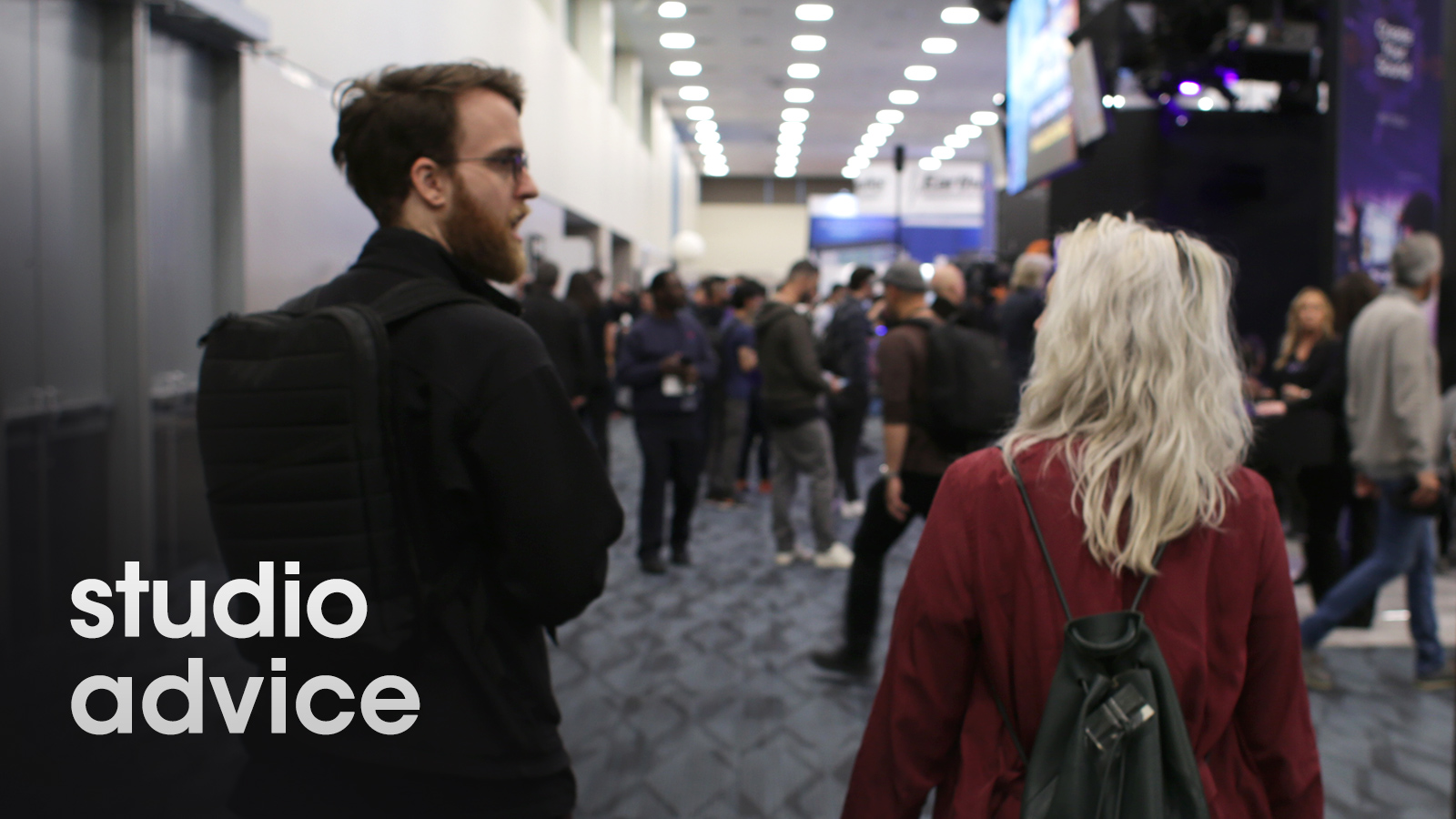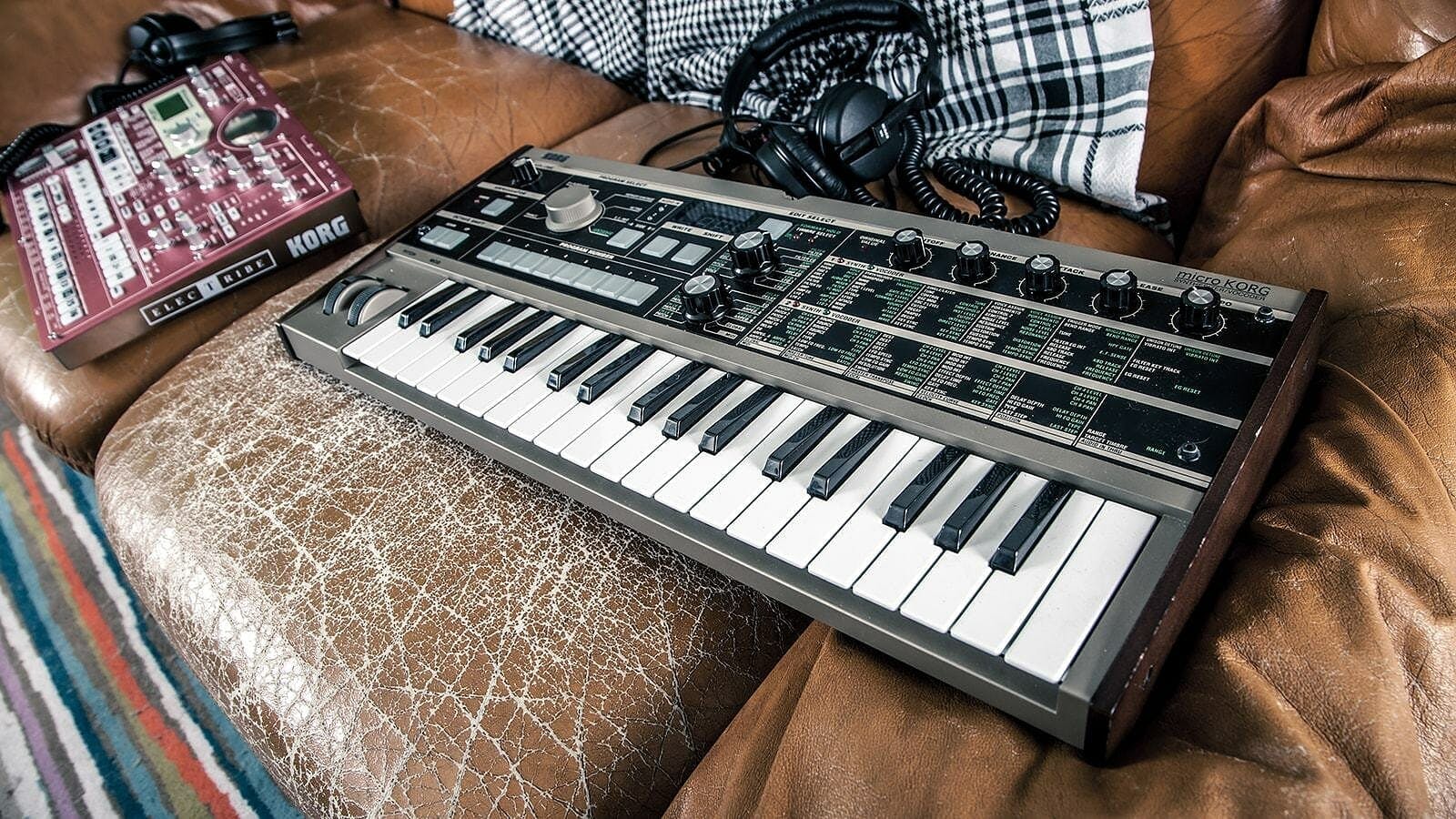
Running into a creative block is inevitable as a creative. Making music demands passion and persistence, since the modern way of producing music is constantly changing, simultaneously full of pitfalls, and infinite opportunities.
Between endless tweaks, scrapping entire projects, and feeling defeated, falling into a creative block is simply part of the natural creative process.
The life of a musician is never smooth sailing — and there will be times when the creative chaos can leave you feeling dejected — but the writers from Get That Pro Sound are here to make things easier.
It’s not so much about avoiding moments of creative drought, but knowing how to navigate and respond to these difficulties when they arise. Using the right tools and working with good people are key, but what separates successful musicians from the masses is the will to keep at it.
Working harder and longer is not the answer. Efficiency and creativity don’t come from the same parts of the brain. Instead, we’ll have to learn some tricks to loosen up our approach to enhance the creative process.
1. Prioritize fun time
Instead of setting yourself up for another day of “work,” change the pace and set aside some studio time to “play” without objectives or goals. Explore your tools, try out crazy techniques, and check out processing chains that you’d never normally consider in your business-oriented, got-to-get-this-done mindset.
In turn, this exercise will set off a chain reaction and free up space in your brain to respond to new stimuli and fresh ideas. You’ll likely come up with a few nuggets of inspiration to provide a starting point for future tracks and production in ways you never before imagined.
In Zen Buddhism, free time allows you access your “beginner’s mind” — the state when everything is new, fresh, and exciting. This is when you drop all preconceptions.
Make music a novelty again: You’ll get past a creative block before you can count the eighth note.
2. Step away from feeling stuck
It’s exhausting to work at getting things done when you feel unmotivated. It seems counterintuitive to step away and do something else, but that may be exactly what is needed.
How to deal with creative blocks: Simply going for a walk has been the default creative block-breaker for centuries. Writers, artists and musicians have long known the power of the meditative, trance-like state that occurs when you hit the path, sidewalk, or pavement.
Whether you are going on a run or partaking in some classic #NetflixandChill, get out of the studio and gain some perspective. Rediscover your excitement and curiosity about other aspects of the world. You’ll naturally refill your inspiration tank and get those creative juices flowing.
If you don’t feel like creating something directly in the studio, at least create some space for your mind and get moving. Allow your subconscious to start stewing up a fresh batch of delicious new ideas and new perspectives.
3. Feel the fear and do things differently
Fear is the antithesis to creativity. We often look to past experiences in order to dictate how we move forward, but this can be a dangerous path if you don’t have the right approach.
Self-doubt can validate your fears and habitual thinking sabotages your creative impulses (which are unconventional by nature).
If madness is “doing the same thing and expecting a different result,” it’s time to take a closer look at your workflow when creating a piece of music — particularly in the early stages.
Is there anything that you do the same way every single time?
Find two or three things you repeatedly do and forbid yourself from doing them, at least for a while. In fact, if there’s an exact opposite approach to your habitual behavior, try that and see if it helps you overcome a creative block.
Experiment with how can you introduce some spontaneity into your process.
There’s a long history of artists jolting themselves out of their habitual creative processes to keep moving forward and explore more of their creative potential. In 1967, when The Beatles felt boxed in by the incredibly famous identity they’d created, they reinvented themselves as a new group: Sgt. Pepper’s Lonely Hearts Club Band.
David Bowie and Bob Dylan are also masters of reinvention and alter-egos, both personally and musically. Even Beyoncé got in on the act when she created her Sasha Fierce alter-ego to tap into a particular aspect of her creativity. Sonny Moore (former singer of post-punk band From First To Last) seemed to hit his full creative potential when he switched genres and became Skrillex.
We aren’t necessarily telling you to you break out capes and facepaint to become your own version of Ziggy Stardust, but experiment with how can you introduce some spontaneity into your process.
If you’re a metal-head, make an electronic pop track. If you only listen to drum and bass (or beat-heavy genres), try your hand at an ambient piece. Give new color to your voice and you can work your way out of — or around — any creative block.
4. Separate the creative and editing processes
With computer-based music-making, it’s far too easy to blur the two distinct parts of the creative process. While infinite “undo” and tweakable options are amazing, they can also lead us into the trap of self-editing, criticizing, and undermining our own ideas. It’s important to get over the idea that all your productions will be masterpieces (or even successes). Relax.
Get comfortable cranking out ideas at a quicker rate, allowing the creative process to unfold naturally at its pace. Later, with a different perspective, apply your critical scalpel to edit and improve these ideas.
5. How to be creative: forget about it
What do you do when you’ve been working on a project for too long, and you don’t feel you can scrap it or start something else while it’s glaring at you from your project folder? In the world of novelists and fiction writing, “putting it in a drawer” is a well-known term for setting aside a project (e.g. out of sight and out of mind), perhaps for months at a time.
It took Queen singer Freddie Mercury seven years to complete writing “Bohemian Rhapsody.” He kept putting it away and then coming back to it.
If the work is still on your mind further down the road, you’ll know that it’s worth working on some more. You’ll also have the ability to see it in a fresh light.
While it can be painful to bury a project, you may find that when you don’t think about it, you’ve freed up your attention to develop newer, better ideas.
6. Take less time, not more
Although we clearly have to make time and expend some energy to get anywhere, this isn’t really the whole story of how the creative process (and our minds) work.
Oftentimes, we fall into the trap of thinking that we need to keep sitting at our studio desk to overcome the creative obstacles. This makes it feel even more like a chore that must be ticked off a to-do list.
Again, the best solution is the most counterintuitive.
Purposefully limit the amount of time you allow yourself to spend on any production aspect. Treat it like a game: “Okay, I’ve got exactly 10 minutes to create this drum pattern.”
It’s surprising how a time limit short-circuits our critical brains. Rather than agonizing over the details, get your tracks recorded. You can always go back later if it needs tidying up. More often than not, it won’t need that much polishing.
Remember that rawness and a sense of spontaneous creation can be one of the most appealing things about well-crafted music.
An interesting thing happens when we have deadlines: Somehow, we finish what needs to be done (and no more), resulting in stripped-down, vital productions with a sense of urgency and life.
As an example, when the Velvet Underground’s carefully positioned debut album failed to make an impact on the US charts (and was then further hampered by legal complications), they went back into the studio. Frustrated and energized, the band recorded the classic “White Light/White Heat” in just two days. They recorded the 17-minute “Sister Ray” in one take, accepting any “mistakes” they made as part of the track.
In 1965, Bob Dylan took just three days to record Bringing It All Back Home. Interestingly, the only takes they used on the album were from the last two days. The album went on to sell over a million copies.
When the Beatles went to record their debut album in 1963 with producer George Martin, they essentially performed their live set into two microphones at Abbey Road. In just 13 hours, the band recorded 10 tracks.
7. Use fewer tools, not more
Distraction comes in many forms. If your creative work is desk-bound, the opportunity for simply jumping online when you get frustrated, checking in with social media, or watching videos of cats, can be overwhelming.
But a more insidious form of distraction can come from the very place we’re trying to focus on: our studio equipment. DAWs, plugins, MIDI controllers, synths and apps are great — until they cause option overload and you’re paralyzed by the infinite possibilities. More equipment is not necessarily better in order to get out of a creative block.
See if you can make a complete track using a single VST synth without additional FX, plugins, samples, or processing (except what’s available on your chosen synth). Reduce your creative options and you’ll be surprised how much more focused and productive you can be.
8. Change your environment
When creatively stuck, bands and artists regularly decamp to new locations to write or record. Although we all can’t waltz off to the legendary Hansa Studios or Muscle Shoals at the drop of a hat, the principle of switching environments still applies to home and bedroom producers.
How to become more creative: Get out of your familiar surroundings. With today’s technology, it’s never been easier to pull a Damon Albarn and make an album on your iPad. You might also find that your music comes out differently when you’re on headphones in a public place, or outside in the middle of nowhere. You can always take your location sketches back to agonize over them in the comfort of your studio later.
Don’t forget that the journey can be the most inspiring thing about going somewhere different. Some of the best recorded music has been created around the idea of travel, of transitioning to new places and new realms of thought.
9. Frame your project with a theme
Music producer block often occurs when you’re unsure of what you’re trying to achieve. One way around this is to give yourself a very specific focal point or idea around which to orient your work. This way, you won’t spend ages debating whether something works or not.
When producing music, a framing automatically gives you a specific context for your work, freeing you from the bottomless pit of endless options.
Before you start worrying about having to create a ’70s-style prog-rock concept album, remember that your thematic glue can be as clear or abstract as you want it to be.
Give yourself a very specific focal point or idea around which to orient your work.
For example, Metallica has based some of their best songs on famous horror and classic literature. “For Whom The Bell Tolls” was directly inspired by Ernest Hemingway’s 1940 novel of the same name, and “Call of Ktulu” refers to the unfathomable, god-like monster that originated in the story The Call Of Cthulhu by horror master extraordinaire, H.P. Lovecraft.
Jon Hopkins’ 2013 album Immunity opens with the sound of him opening the door, stepping off the street, and into his studio. It then develops by following the energetically pulsing ebb and flow journey of a great night out.
Why not try writing an alternate soundtrack to one of your favorite movies — or at least your favorite scene? This gives you a concrete framework from which to refer, with a specific beginning, end, and dramatic beats in-between. Or give yourself a themed challenge: “I’m going to write one track a day, every day this week, no matter what.”
10. Be more creative by raising the stakes
There’s nothing like public pressure to motivate you to get things done. If you commit to a project where the consequences are greater than your own personal creative satisfaction (e.g. where you run the risk of letting other people down), you’ll be tapping into another powerful source of inspiration.
Tell friends, relatives, or your social media following that you’ll have a new release available by a given date. Give your goal just enough hype where you’d be embarrassed if you didn’t follow through and deliver on your promise. It’s a simple psychological trick, and it often works.
11. Music theory for computer musicians: learn it!
For some self-taught producers, this might sound like replacing frustrating work with similarly frustrating work, but taking some time away from writing and producing to actually learn a bit of music theory can be great to learn how to get past creative blocks.
Studying music theory like chord structures, arrangements, and how to build melodies and harmonies in a directed way will nicely prepare you for the next time inspiration strikes.
12. Learn some new techniques
If you’re feeling frustrated and uninspired with your music-making endeavors, it’s probably because you struggle with transferring and shaping your ideas by the time they get to the computer. Why not take some time away from trying to realize your ultimate vision to learn some core aspects of your chosen craft?
For example, focus exclusively on compression until you can choose how and when to use compression like a true pro.
Get back to basics and fundamentals: You’ll feel like you’re making progress again. This will build your confidence back up, which in turn will allow you to relax and let your creativity shine through again.
13. Make a regular appointment
No, not with a psychiatrist just yet. This involves setting strict, scheduled limits on your studio time. Set a schedule for yourself. It doesn’t need to be a time-consuming commitment. As we’ve just mentioned, the shorter the time limit, the more efficient you’ll be. What’s most important is your consistency.
Another famous quote amongst novelists is, “The art of writing is the art of applying the seat of the pants to the seat of the chair.” The same idea applies to musicians.
Oftentimes, cutting through procrastination and the act of showing up consistently (especially for a short time), can be just what your creativity was asking for.
14. Benefits of collaboration
One of the greatest things about music is its collaborative nature. And when your inspiration is drying up, almost nothing is better than bringing other people into the mix.
Electronic music, in particular, can be a very solitary activity. While that’s the very reason that some people are drawn to it (“Total freedom to do whatever I want!”), this can also become a massive obstacle when you don’t have anyone else to bounce ideas off (or critique/edit your work).
If you find your brain is stagnating, simply get another person into the creative equation. It’s also quite likely that collaboration will mean a change of scenery too, if you go to another musician’s studio or rehearsal space, you’ll kill two birds with one stone!
Many music careers have been kickstarted, reinvigorated, or spun into an entirely new direction as a result of a particular collaboration. Think Aerosmith and Run-DMC, Dr. Dre and Eminem, MF Doom and Madlib, or Brian Eno and pretty much everyone — at some point or another.
In 2013, Arcade Fire teamed up with LCD Soundsystem’s head honcho, James Murphy, on production duties to bring a different perspective to their sound on Reflektor.
Incidentally, the album was initially inspired by a trip to Haiti, the home country of band member Régine Chassagne. And, it features a cameo vocal collaboration from none other than David Bowie on the album’s title track. Bowie happened to pop by while they were mixing in New York, and after he jokingly threatened to steal the song for himself, they got him to jump in on their own version instead.
Offer to remix someone else’s track, do a remix exchange with a fellow producer, or for your next session, bring in a friend as a session player. A vocalist, guitar player, bongo player… whoever who can change the wavelength of a session and fire your creativity in new directions. Mix it up.
Don’t be too precious
It’s easy to get so obsessed with perfecting your art that it becomes a chore, rather than what it truly can be: A chance for free expression, to make an authentic connection with your listeners, and have pure fun.
Above all, we hope the points and the actions detailed provide some encouragement the next time you hit a creative block. For more tips, check out this guide on how to generate songwriting ideas.
